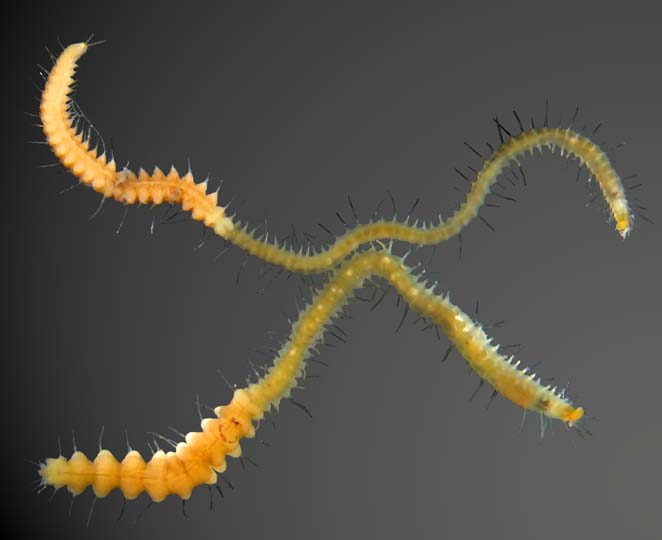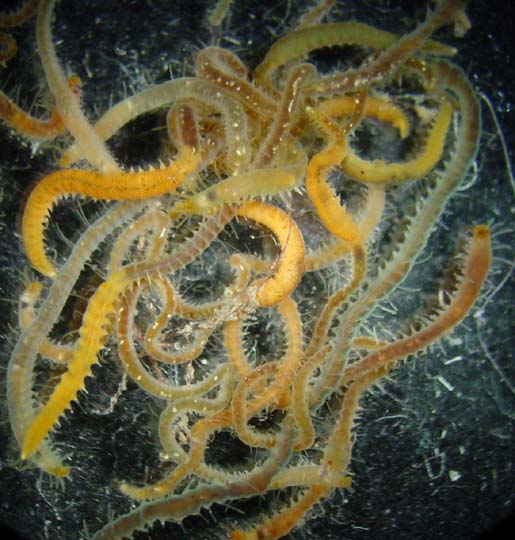California Academy of Sciences
Home What is a Settling Plate? Settling Plate Organisms Participating Schools Get Involved!
Typosyllis nipponica Imajima, 1966 - Non Native
This syllid polychaete is very common in benthic environments of San Francisco Bay, both subtidally and in dock fouling communities, where it was first identified by polychaete specialist Leslie Harris (NMHLAC). Typosyllis nipponica was introduced to San Francisco Bay from Japanese waters, likely as a result of international shipping. The species is recognizable from other syllids in the Bay by the darkened band across the proventricle (a muscularized region of the gut behind the pharynx). This worm is often found in its reproductive form called an epitoke.
Polychaete worms in the family Syllidae reproduce by packing eggs or sperm into the posterior dozen or so segments of the body (seen here as the brighter yellow sections of the bodies) or by budding gamete-filled sections off of their posterior end. During this hormonally driven process of stolonization this rear section, called a stolon, develops specialized swimming setae, and a rudimentary head with large eyes at the junction with the unmodified body region (L. Harris) to allow for greater mobility and sensory. The stolon then breaks off to swim free of the adult worm, and swarms with other reproductive sections of the same species. In the course of these swarms, the individuals burst open and release their eggs or sperm into the water and allowing fertilization to occur. This type of reproduction allows for the survival of the adult form (the atoke) of the worm to breed again.
Epitokes
form an important source of food in some Pacific cultures, including Hawaii
where they are known as palolo, and are eaten directly from the water during
spawning. The epitokes of Typosyllis nipponica are not, to our knowledge,
typically used for this purpose.



